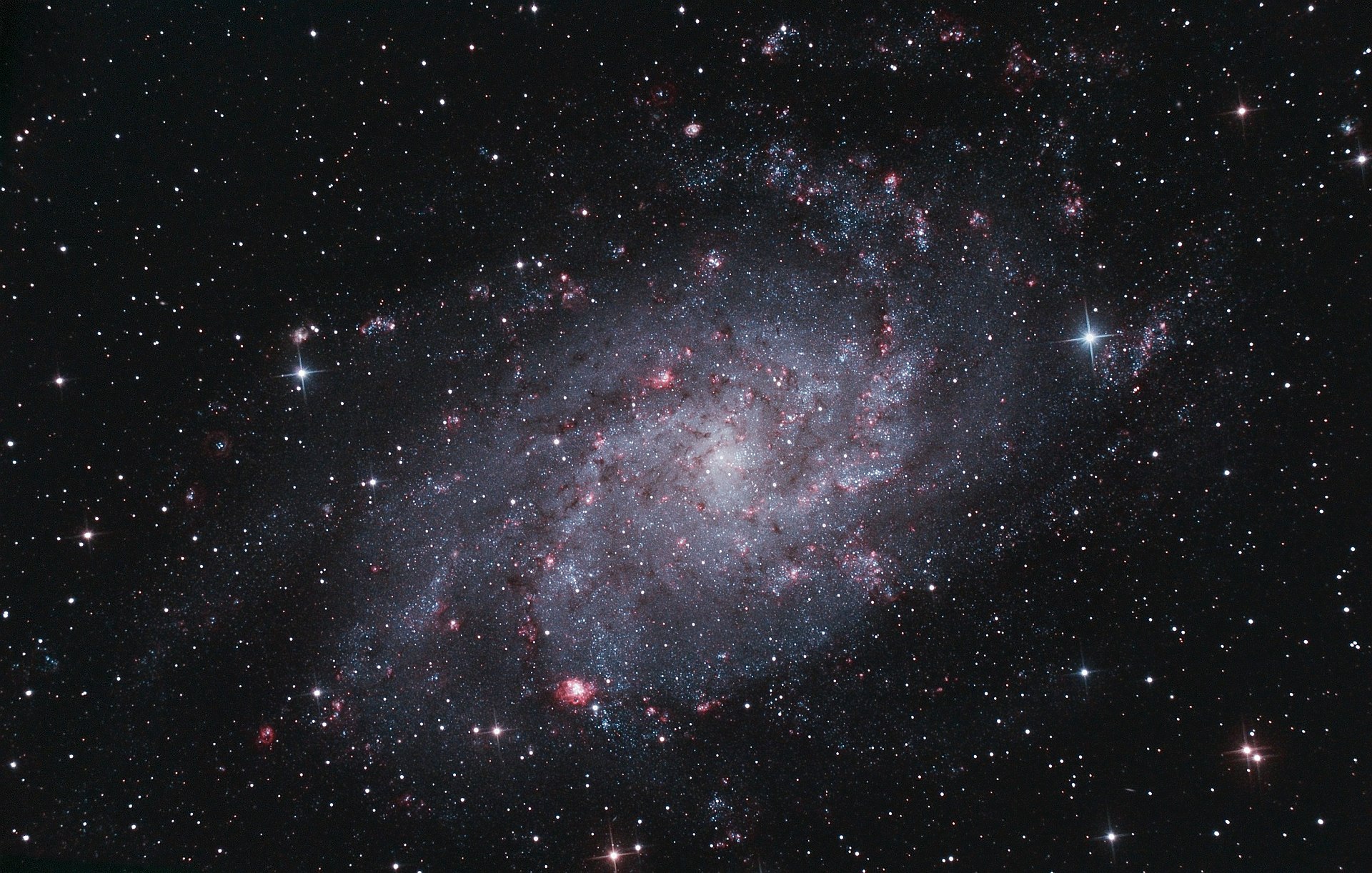The Hubble Tuning Fork is a method of categorizing galaxies based on their shape. It breaks galaxies up into three major categories: elliptical, spiral, and barred spiral galaxies.
Elliptical galaxies are classified based on their ellipticities, with more elliptical galaxies closer to the fork. These galaxies are obviously characterized by their elliptical or round shape, but also by their more incoherent rotations. They tend to be older (and therefore redder) galaxies, which is part of the reason why their rotations are more random. Often, they don't have active areas of star formation.
Spiral galaxies have identifiable spiral arms and a central bulge. They are categorized first by the presence or absence of a bar of stars through the center, and then by the tightness of the spiral, with looser spirals towards the ends of the fork. Spiral galaxies tend to be younger galaxies with more uniform rotation than elliptical galaxies. They also have active star formation in their gas and dust lanes, and therefore tend to be bluer than elliptical galaxies.
The final type of galaxy on the Hubble Tuning Fork is the S0, or lenticular galaxy. These galaxies don't have as well-defined of a structure as spiral galaxies do, but like spiral galaxies, they have a central bulge and a disk.
Although not included on the Tuning Fork, irregular galaxies also exist. These tend to be galaxies that have formed through the collision or gravitational interactions of multiple other galaxies, so they don't really have standard features in the same way elliptical or spiral galaxies do.
.jpg/1024px-Irregular_galaxy_NGC_1427A_(captured_by_the_Hubble_Space_Telescope).jpg) |
| NGC 1427A, an irregular galaxy (plus a bonus spiral galaxy photobomber!) |








.jpg/1920px-Andromeda_Galaxy_(with_h-alpha).jpg)


.jpg/1024px-Irregular_galaxy_NGC_1427A_(captured_by_the_Hubble_Space_Telescope).jpg)

Excellently done! And good job with the descriptions of the physical features of each galaxy class.
ReplyDelete6